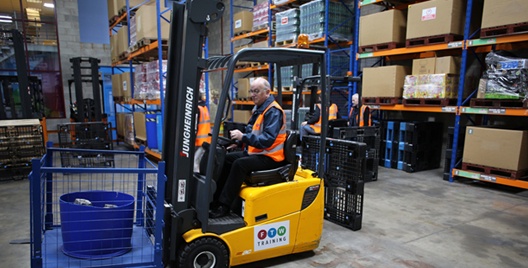Forklifts are crucial tools in countless warehouses and industrial settings. They keep operations running smoothly by efficiently transporting and lifting heavy materials. However, operating a forklift for extended periods can put a strain on the body, leading to fatigue, discomfort, and even potential injuries. This is where ergonomics comes into play.
Ergonomics is the science of designing workplaces and equipment to fit the needs of the human body. By incorporating ergonomic principles into forklift design, manufacturers can create a more comfortable and safe work environment for operators. This, in turn, leads to several benefits, including:
- Reduced Risk of Injuries: Musculoskeletal disorders (MSDs) are a common concern for forklift operators, often caused by awkward postures, repetitive motions, and vibrations. Ergonomic design can mitigate these risks by promoting proper posture and minimizing strain on muscles and joints.
- Improved Productivity: When operators are comfortable and less fatigued, they can work more efficiently and make fewer errors. This translates to increased productivity and cost savings for businesses.
- Enhanced Safety: Reduced fatigue and improved focus lead to better decision-making and situational awareness. This translates to fewer accidents and a safer work environment for everyone.
- Higher Job Satisfaction: Working in a comfortable environment with ergonomically designed equipment can significantly improve job satisfaction for forklift operators.
Incorporating Ergonomics into Forklift Design
Several key features contribute to an ergonomically designed forklift:
- Adjustable Seating: A comfortable seat with adjustable features like lumbar support, armrests, and tilt/recline mechanisms is essential. This allows operators of various sizes and physiques to find a comfortable and supportive posture that minimizes back strain.
- Control Layout: The placement of controls, such as levers, buttons, and pedals, should be intuitive and within easy reach to avoid awkward reaching or twisting. This reduces muscle fatigue and promotes a natural posture.
- Visibility: A forklift with good all-around visibility minimizes blind spots and allows operators to maneuver safely and efficiently. Features like wide masts, narrow uprights, and strategically placed mirrors contribute to optimal visibility.
- Vibration Dampening: Forklifts can generate significant vibrations during operation. Ergonomic design incorporates features like suspension seats and vibration-dampening materials to minimize these vibrations and reduce the risk of long-term health problems.
- Climate Control: Working in hot or cold environments can contribute to operator fatigue. A well-functioning climate control system within the forklift cabin helps maintain a comfortable temperature for the operator.
Forklift Training and Ergonomics
While ergonomic design plays a critical role, proper forklift training is equally important in creating a safe and comfortable work environment. Forklift training programs should not only focus on operational procedures and safety regulations but also emphasize the importance of ergonomics. Here's how forklift training can promote ergonomics:
- Posture Awareness: Training should include instruction on proper posture while operating the forklift. This includes maintaining a neutral spine, avoiding awkward reaching, and using armrests and lumbar support effectively.
- Work Practices: Training should cover techniques to minimize repetitive motions and take regular breaks to prevent fatigue. Additionally, operators should be encouraged to report any discomfort they experience while operating the forklift.
Benefits of Ergonomics in Forklift Training
Integrating ergonomics into forklift training offers several benefits:
- Reinforces Safe Habits: When operators understand the connection between ergonomics and safety, they are more likely to adopt safe work practices and avoid behaviors that could lead to injuries.
- Improves Knowledge Retention: By emphasizing ergonomic principles during training, operators gain a deeper understanding of how the forklift works and how to operate it safely and comfortably.
- Empowers Operators: Forklift training that incorporates ergonomics empowers operators to take control of their own well-being. By understanding the importance of proper posture and work practices, operators can actively reduce their risk of injuries and fatigue.
Conclusion
Ergonomics plays a vital role in creating comfortable and safe work environments for forklift operators. By incorporating ergonomic principles into forklift design and integrating ergonomics into forklift training programs, businesses can promote operator well-being, improve productivity, and reduce the risk of accidents and injuries. This is a win-win situation for both businesses and their employees.


No comments yet